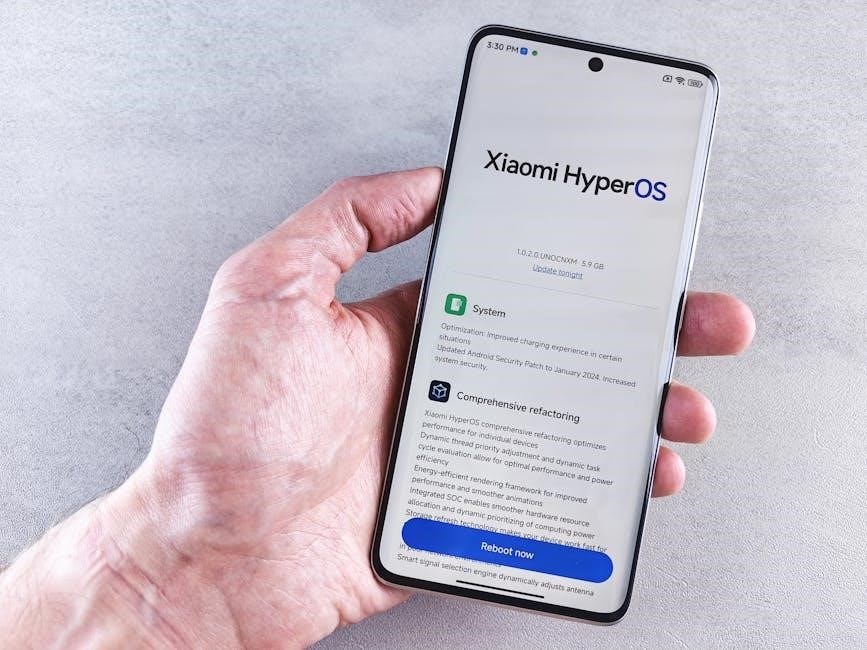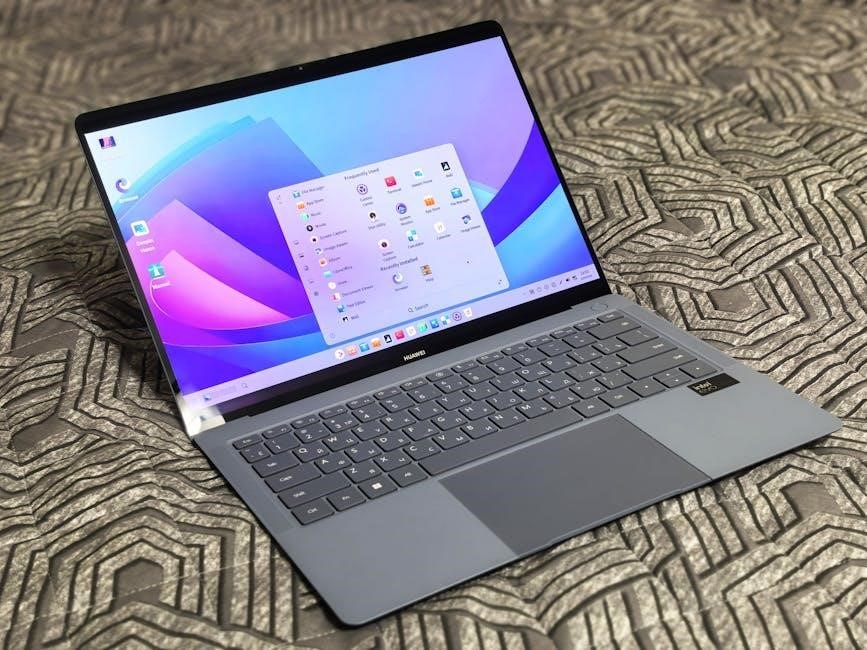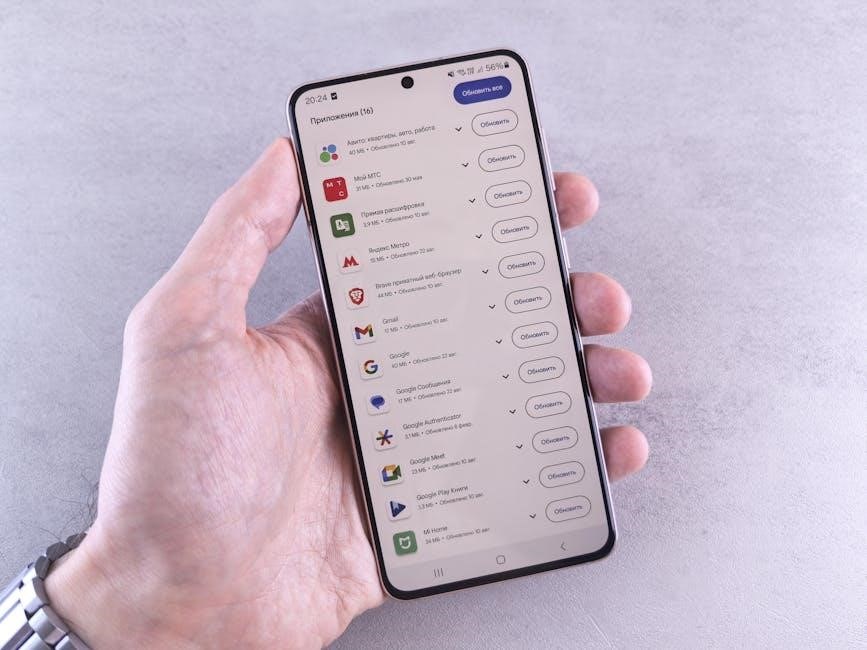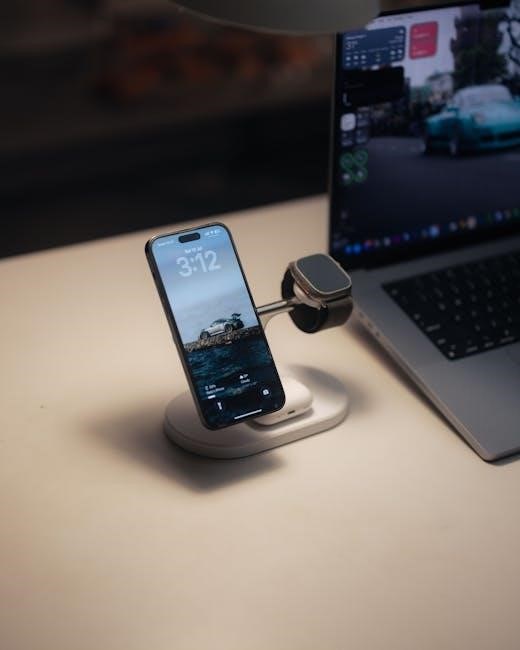A Dungeon Master Screen is a versatile tool designed to enhance game mastery and organization in Dungeons & Dragons. It provides quick access to essential rules, charts, and monster stats, helping DMs maintain immersion and control during sessions. Modern screens often feature dynamic systems and customizable inserts, making them indispensable for streamlining gameplay and improving the overall gaming experience.
1.1 What is a Dungeon Master Screen?
A Dungeon Master Screen is a tool designed for Dungeons & Dragons (D&D) Dungeon Masters to organize and reference essential game information during sessions. Typically made of sturdy materials or available as downloadable PDFs, it features charts, tables, and quick-reference guides to streamline gameplay. Screens often include monster stats, combat rules, and skill challenge tracking, allowing DMs to maintain immersion and efficiency. Customizable options enable personalization, making it a versatile resource for both new and experienced DMs to enhance their storytelling and game management capabilities.
1.2 Importance of a DM Screen in Dungeons & Dragons
A Dungeon Master Screen is essential for maintaining organization and immersion in Dungeons & Dragons. It allows DMs to quickly reference rules, charts, and monster stats without disrupting the flow of the game. By keeping critical information at hand, screens reduce downtime and enhance storytelling. They also serve as a visual barrier, shielding DM notes from players to preserve surprise and immersion. With modern designs offering customizable inserts and dynamic systems, DM screens have become indispensable tools for both new and experienced DMs, elevating the overall gaming experience.

History and Evolution of DM Screens
DM screens have evolved from basic rule references to comprehensive tools with dynamic systems. Early versions focused on essential charts, while modern designs incorporate customization and digital integration, enhancing gameplay efficiency and storytelling.
2.1 EarlyVersions of DM Screens
2.1 Early Versions of DM Screens
Early DM screens were simple, focusing on basic rule charts and tables. They provided quick access to essential information, helping Dungeon Masters organize their games. Initially, these screens were printed on cardstock and featured minimal design, primarily serving as reference tools. Over time, they evolved to include more detailed charts and monster stats, becoming indispensable for maintaining immersion. Despite their limited customization, early screens laid the foundation for the comprehensive tools modern DMs rely on today.
2.2 Modern DM Screen Designs
Modern DM screens have evolved into sophisticated tools with enhanced functionality. They feature dynamic systems, customizable inserts, and sleek designs to streamline gameplay. Many screens now include adjustable layouts, allowing Dungeon Masters to personalize their setup; High-quality materials like vinyl or leather are common, offering durability. Some designs incorporate digital integration, enabling DMs to access rules and stats via QR codes or companion apps. Aesthetic appeal has also grown, with artistic graphics that enhance the gaming atmosphere. These advancements reflect the growing demand for efficiency and creativity in D&D gameplay.

KeyComponents of a DM Screen
A DM screen typically includes essential tables, monster stats, and skill challenge tracking, designed to streamline gameplay and enhance immersion. These components ensure quick access to vital information during sessions.
3.1 Essential Tables and Charts
E
ssential tables and charts are the backbone of a DM screen, providing quick access to critical information. These include skill challenge tables, combat encounter levels, and condition effects. They help DMs manage pacing and rules seamlessly. Modern screens often feature customizable charts for initiative tracking and monster stats, ensuring smooth gameplay. These resources enhance immersion by allowing DMs to focus on storytelling rather than rulebook searches. Digital versions may include interactive elements, further streamlining the experience.
3.2 Monster Stats and NPC Information
A well-designed DM screen includes comprehensive monster stats and NPC information, ensuring quick access during sessions. These sections often feature attack bonuses, armor classes, and special abilities for monsters, as well as personality traits and dialogue prompts for NPCs. This organization allows DMs to manage encounters seamlessly and maintain immersion. Many screens also include blank spaces for custom entries, enabling DMs to tailor stats and behaviors to their unique campaigns. This feature-rich design makes it easier to adapt to unexpected player choices and dynamic storytelling.
3.4 Skill Challenge and Combat Tracking
A DM screen often includes tools for managing skill challenges and combat encounters, ensuring smooth gameplay. These sections typically feature initiative trackers, condition effects, and skill challenge matrices. They help DMs organize complex scenarios, track player progress, and maintain pacing. Many screens also provide space for noting monster tactics and environmental hazards, allowing for dynamic adjustments. These features enhance the DM’s ability to create engaging, balanced encounters while keeping the game flowing naturally. Customizable inserts further tailor these tools to specific campaigns, improving overall efficiency.

Designing Your Own DM Screen
Creating a custom DM screen allows for personalization and organization, tailoring tools to your playstyle. Incorporate dynamic systems, artwork, and community resources to enhance your gameplay experience.
4.1 Layout and Organization Tips
When designing a DM screen, prioritize a clean layout and intuitive organization. Group similar data, such as combat rules or monster stats, into clear sections for quick access. Use tabs or dividers to separate charts and tables, ensuring readability. Incorporate blank spaces for notes and custom inserts. A well-organized screen enhances gameplay flow, keeps players engaged, and reduces distractions. Consider digitally layering content for versatility, allowing you to toggle between sections without clutter. This approach streamlines your role as the DM, making your sessions more immersive and efficient.
4.2 Incorporating Custom Art and Graphics
Custom art and graphics can elevate your DM screen’s visual appeal and thematic consistency. Use high-resolution images that align with your campaign’s aesthetic, such as fantasy landscapes, mythical creatures, or intricate borders. Incorporate thematic designs for different sections, like a dungeon map for combat rules or a mystical pattern for spellcasting charts. Tools like Photoshop or Canva can help create seamless designs. Online resources offer free-to-use artwork, ensuring your screen is both functional and visually striking. Personalizing the art makes the screen unique to your style, enhancing your role as a DM and the players’ immersion in the game.
4.3 Dynamic Systems for Modern Play
Modern DM screens often incorporate dynamic systems to enhance gameplay flexibility. These include conditional formatting for real-time updates and interactive elements like rotating wheels or adjustable sliders. Tools like Excel or Google Sheets allow for customizable inserts that update automatically, such as initiative trackers or environmental effect modifiers. Digital integration with platforms like Roll20 or FoundryVTT enables seamless transitions between physical and virtual play. The Ultimate DM Screen by dScryb exemplifies this trend, offering adaptable systems that streamline rulings and maintain immersion. These features ensure the screen evolves with the game, keeping players engaged and the DM organized.

Popular DM Screen PDFs Available Online
Discover a wide range of Dungeon Master Screen PDFs, from official Wizards of the Coast releases to community-created designs. Find options like the Ultimate DM Screen by dScryb, featuring dynamic systems, or fan-made screens with unique artwork and customizable layouts. These resources offer comprehensive charts, monster stats, and innovative tools to elevate your D&D experience. Explore platforms like D&D Beyond or Reddit for the best downloadable screens tailored to your playstyle.
5.1 Official Wizards of the Coast Releases
Official Dungeon Master Screens from Wizards of the Coast are meticulously designed to enhance gameplay. These screens typically include essential charts, monster stats, and rule summaries, ensuring quick reference during sessions. They are crafted to maintain immersion and organization, with a focus on streamlining gameplay. Available as PDFs, these screens are compatible with various editions of D&D, such as the 5th Edition. Their professional design and content make them a trusted resource for both new and veteran DMs, offering a reliable foundation for managing campaigns effectively.
5.2 Community-Created and Fan-Made Screens
Community-created and fan-made DM screens offer a wealth of customization and creativity. These screens, often shared as PDFs, are designed by passionate players and DMs to address specific needs or themes. They range from minimalist layouts to artistically enhanced designs, catering to diverse playstyles. Platforms like Reddit, D&D Beyond, and Patreon host many of these creations, with popular examples such as dScryb’s Ultimate DM Screen. These screens frequently include custom art, dynamic systems, and innovative tools, making them highly sought after by DMs seeking unique solutions to enhance their games.
5.3 The Ultimate DM Screen by dScryb
The Ultimate DM Screen by dScryb is a standout creation, developed over a year and a half to simplify and enhance gameplay. It features dynamic systems, customizable inserts, and comprehensive tools tailored for DMs. The screen includes essential charts, monster stats, and skill challenge tracking, all organized for quick access. Its artistically enhanced design and modular layout make it a favorite among DMs. Available as a PDF, it’s praised for its versatility and ability to streamline sessions, making it a must-have for both new and veteran Dungeon Masters.

How to Use a DM Screen Effectively
Use the DM screen to quickly access essential rules, charts, and stats, maintaining game immersion and pacing. It enhances gameplay flow and organization, ensuring smooth sessions.
6.1 Quick Reference Guides for Rules
Quick reference guides within a DM screen provide instant access to essential rules, such as condition tables, combat mechanics, and skill checks. These guides are organized for clarity, ensuring DMs can resolve disputes or questions swiftly. They often include charts for initiative, attack bonuses, and spell effects, streamlining decision-making. By having these resources at eye level, DMs can maintain immersion and keep the game flowing without interruptions. This feature is particularly useful for new DMs, helping them navigate complex rules with confidence. It enhances gameplay efficiency and reduces downtime during sessions.
6.2 Managing Pacing and Flow During Sessions
A well-designed DM screen helps maintain the rhythm of the game by providing quick access to essential tools. Features like timers, condition trackers, and session notes enable DMs to keep the story moving smoothly. By organizing key information, screens prevent downtime and ensure seamless transitions between scenes. This allows DMs to focus on storytelling and player engagement, creating a more immersive experience. Effective pacing keeps players invested and maintains the excitement of the adventure, making the DM screen an invaluable tool for dynamic and engaging sessions.
6.3 Enhancing Player Immersion
A DM screen is more than just a tool; it’s a gateway to deeper immersion. By keeping key information hidden from players, it allows DMs to reveal details at the perfect moment, maintaining mystery and suspense. Custom art and thematic designs on the screen can enhance the visual appeal, setting the tone for the campaign. Quick access to NPC personalities and monster lore ensures consistent storytelling, while dynamic systems like condition trackers keep players engaged without breaking the flow. This seamless integration of tools and creativity fosters a more immersive and memorable experience for everyone at the table.

Tips for New Dungeon Masters
New DMs should prepare thoroughly, stay flexible, and engage players actively. Use a DM screen to organize rules and stats, ensuring smooth and immersive gameplay.
7.1 Essential Tools Every DM Should Have
A well-prepared DM relies on several key tools to enhance their game. A Dungeon Master Screen is indispensable, providing quick access to rules, charts, and monster stats. Official rulebooks, such as the Player’s Handbook and Monster Manual, are crucial for reference. A set of polyhedral dice ensures randomness and fairness. A battle mat or grid helps visualize combat scenarios, while initiative trackers and condition cards streamline gameplay. Custom character folios and campaign notebooks keep player and story details organized. Digital tools, like D&D Beyond or virtual tabletops, offer additional convenience and accessibility for modern play.
7;2 Building Confidence Behind the Screen
Building confidence as a DM begins with preparation and familiarity with your tools. A Dungeon Master Screen provides quick access to essential rules and charts, reducing uncertainty. Start by mastering the basics, such as initiative order and skill checks, to create a smooth flow during sessions. Practice active listening and adaptability to respond to players’ actions. Embrace creativity and remember that it’s okay to improvise. Learning from experienced DMs and seeking feedback can also bolster your confidence. Over time, you’ll grow comfortable guiding the story and creating memorable experiences for your players.
7.3 Learning from Experienced DMs

Learning from experienced DMs is crucial for improving your skills. Observing how veteran DMs use tools like the Ultimate DM Screen can provide insights into organizing rules, monster stats, and pacing. Study their techniques for managing player interactions and maintaining immersion. Incorporate their strategies for preparing dynamic systems and customizable inserts. Engage with online communities and watch popular D&D streams to see how seasoned DMs handle challenging situations. By emulating these practices, you can refine your approach and become a more confident and effective game master, ensuring engaging and memorable sessions for your players.

Advanced Features of Modern DM Screens
Modern DM screens now include interactive elements, digital integration, and AI-enhanced tools for dynamic gameplay. These features streamline rule referencing, monster stat tracking, and player engagement, elevating the DM experience.
8.1 Interactive Elements and Digital Integration
Modern DM screens often incorporate interactive elements and digital integration to enhance gameplay. Features like hyperlinked rule references, digital dice rollers, and AI-powered NPC generators streamline game management. These tools allow DMs to quickly access critical information, generate dynamic content, and maintain immersive storytelling. Digital integration also enables real-time updates, customizable layouts, and seamless connectivity with virtual tabletop platforms. Such advancements ensure that DM screens are not just static aids but dynamic, evolving resources that adapt to the ever-changing needs of modern D&D campaigns.
8.2 Customizable Inserts for Personalization
Customizable inserts allow DMs to tailor their screens to specific campaigns, enhancing organization and accessibility. These inserts can include personalized stat blocks, rule summaries, and campaign-specific charts, ensuring relevant information is always within reach. Players and DMs alike benefit from the ability to adapt the screen to their unique needs, creating a more immersive and efficient gaming experience. With a wide range of downloadable PDF inserts available, DMs can craft a screen that perfectly complements their storytelling style and keeps the game flowing smoothly.
8.3 The Role of AI in Enhancing DM Screens
AI is revolutionizing DM screens by offering dynamic content generation and real-time assistance. Tools like AI-powered stat generators can create unique monsters and NPCs on the fly, while rule summaries and pacing guides help maintain immersion. AI-enhanced screens can also suggest treasure or skill challenges based on campaign themes. For example, during a session, AI might propose a skill challenge to navigate a treacherous forest or suggest a combat encounter tailored to the party’s strengths. These features make DM screens more versatile, enabling better storytelling and player engagement while streamlining preparation and gameplay.

Case Studies of Successful DM Screen Usage
Popular D&D streams like Critical Role and The Adventure Zone showcase how DM screens enhance gameplay. They maintain immersion, organize rules, and streamline sessions, inspiring many DMs worldwide.
9.1 Examples from Popular D&D Streams
Popular D&D streams like Critical Role and The Adventure Zone demonstrate how DM screens enhance gameplay; Matt Mercer and other veteran DMs use custom screens with dynamic systems, ensuring quick rule references and organized monster stats. These streams highlight how screens maintain immersion and streamline sessions. They also showcase how screens can be personalized to fit individual DM styles, making them indispensable tools for both new and experienced Dungeon Masters. These examples inspire many to create or seek out high-quality DM screens for their own games.
9.2 Feedback fromVeteran Players and DMs
9.2 Feedback from Veteran Players and DMs
Veteran players and DMs consistently praise the utility of DM screens, emphasizing their role in maintaining game organization and immersion. Many highlight how screens provide quick access to rules, charts, and monster stats, reducing downtime. Players appreciate the seamless flow of gameplay, while DMs value the ability to keep critical information at their fingertips. Custom screens are particularly commended for their personalization, allowing DMs to tailor tools to their unique playstyles. Overall, feedback underscores the screen’s indispensability in elevating both preparation and performance during sessions.
9.3 Real-World Applications in Gaming Sessions
DM screens prove invaluable in real-world gaming sessions, streamlining gameplay and enhancing immersion. By providing quick access to rules, charts, and monster stats, they reduce downtime and keep the narrative flowing. Many DMs use screens to organize notes and track combat dynamics, ensuring smooth transitions between scenes. Customizable inserts allow for tailored tools, such as condition trackers or initiative boards, catering to specific campaign needs. Players often note the seamless integration of rules and storytelling, highlighting how screens elevate the overall gaming experience and foster engagement for everyone at the table.
